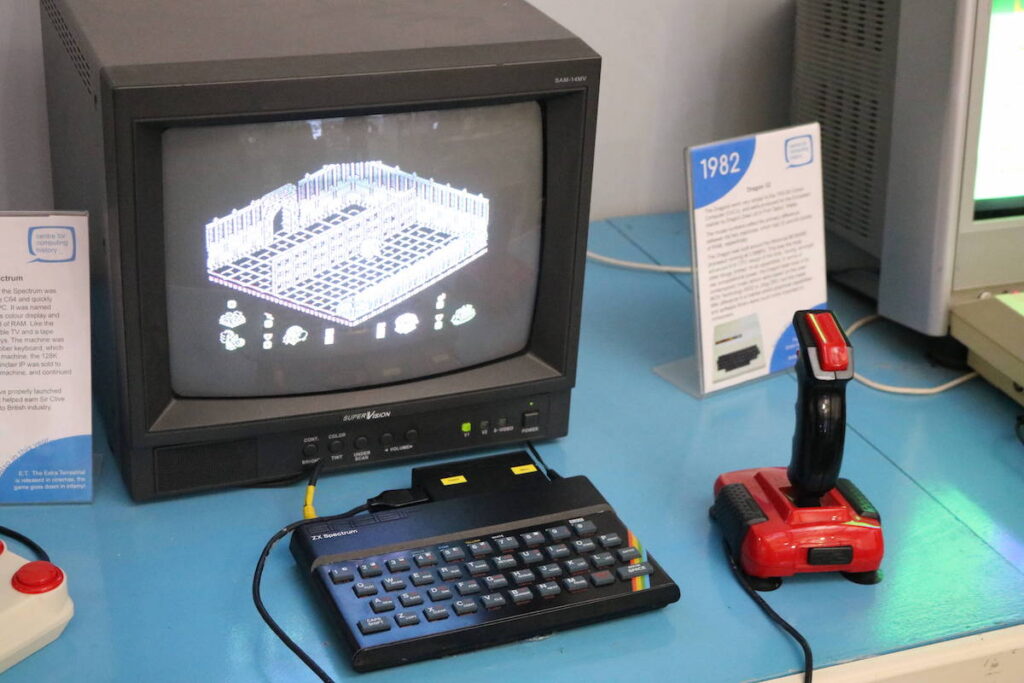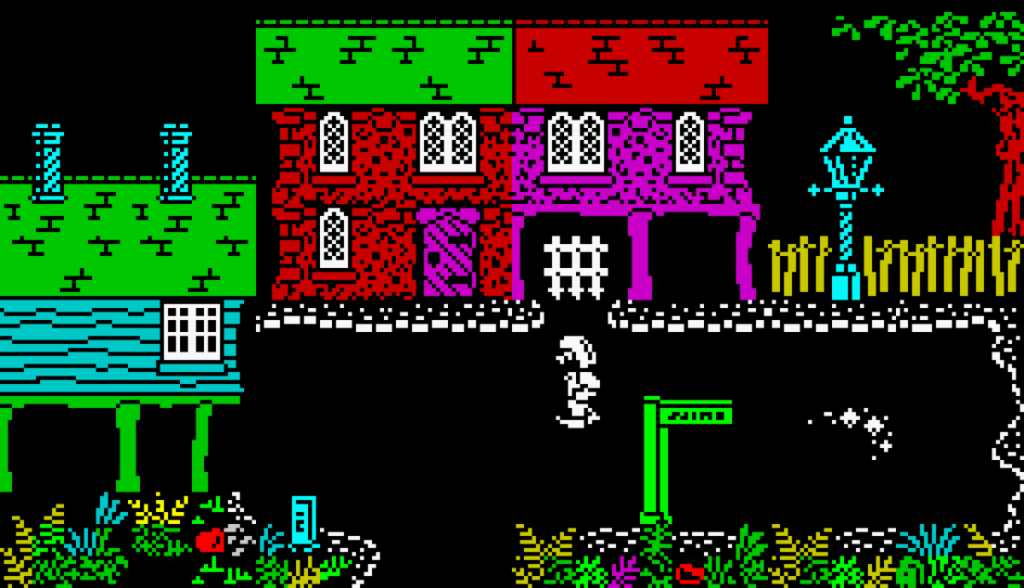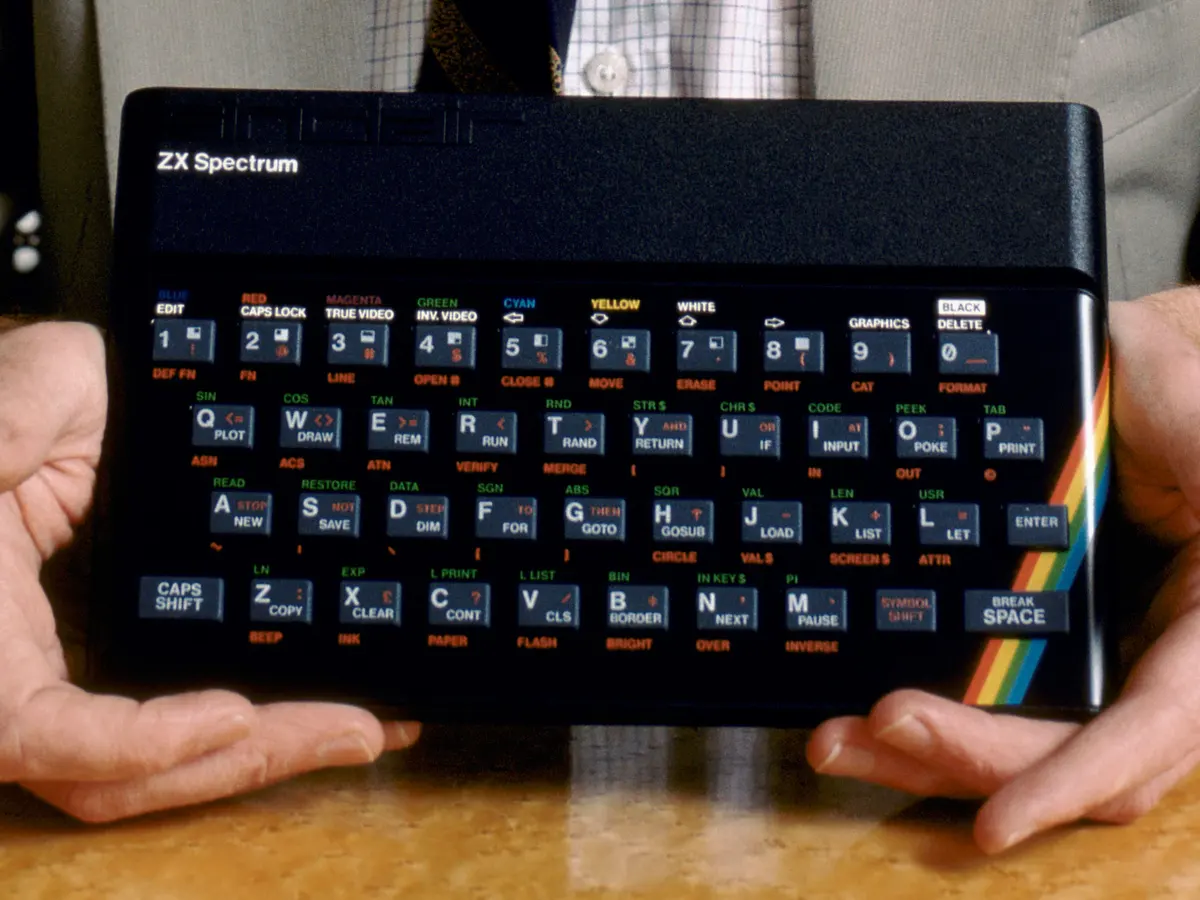When it comes to iconic names in the world of home computing, few can rival the influence and legacy of the ZX Spectrum. In this article, we embark on a journey through time to explore the remarkable history, enduring impact, and enduring nostalgia of the ZX Spectrum. From its humble beginnings to its lasting cultural significance, the ZX Spectrum has left an indelible mark on the world of technology and gaming.
The Birth of an Icon
Invention and Genesis
The year was 1982, and the British computing landscape was about to witness a revolution. Sir Clive Sinclair, a visionary inventor and entrepreneur, unleashed his brainchild onto the world—the ZX Spectrum. This 8-bit marvel was a successor to the ZX81 and was designed to be an affordable home computer that anyone could own.

Sir Clive Sinclair had already made a name for himself with his innovative inventions, including the pocket calculator and the Sinclair Executive, one of the first slimline pocket calculators. However, the ZX Spectrum was a different beast altogether. It was not just a tool for calculation; it was a full-fledged computer designed to bring the power of computing into people’s homes.
The Aesthetics
One of the standout features of the ZX Spectrum was its sleek and minimalist design. Sporting a rubber keyboard with distinctive rainbow stripes across the top, it was a visually striking piece of hardware that captured the imagination of tech enthusiasts and gamers alike.
The ZX Spectrum’s rubber keyboard was both an iconic design choice and a point of contention for users. While some found its unique feel and appearance endearing, others struggled with the tactile feedback and durability. Nevertheless, it became an integral part of the ZX Spectrum’s identity and remains a subject of fond nostalgia for many.
The Technical Marvel
Under the Hood
The ZX Spectrum was powered by the Z80 microprocessor, a CPU renowned for its efficiency and versatility. It ran at a modest 3.5 MHz, but in the early 1980s, this was sufficient for most tasks. With a memory range from 16 KB to 48 KB, it offered enough space for both the system and user-generated programs.
Despite its seemingly limited specifications compared to today’s computing powerhouses, the ZX Spectrum was a marvel of its time. It was a versatile machine that could handle a wide range of tasks, from word processing to gaming, and it did so with remarkable efficiency.
The Display
One of the ZX Spectrum’s defining features was its display capabilities. It supported a resolution of 256×192 pixels, and its color palette consisted of eight vibrant colors. While it may seem primitive by today’s standards, at the time, this display was a revelation for gamers and programmers.
The graphics, though pixelated and limited in color, had a certain charm. Game developers embraced these constraints, using them as a creative canvas to craft visually captivating experiences. The simple yet effective display of the ZX Spectrum became a hallmark of its gaming library.

Audio Innovation
Sound was another area where the ZX Spectrum shone. Equipped with a beeper that could produce distinct tones, it delivered a unique auditory experience. Game developers and musicians quickly harnessed this audio potential, giving birth to memorable soundtracks and effects.
The ZX Spectrum’s audio capabilities may have been basic, but they were an integral part of its appeal. The simple beeps and blips of its sound system added an extra layer of immersion to games and made the machine even more endearing to its users.
The Software Revolution
Spectrum BASIC
The ZX Spectrum came bundled with a programming language called Sinclair BASIC. This enabled users to write and run their own programs, laying the groundwork for a generation of aspiring programmers. Many tech enthusiasts took their first steps into the world of coding on this humble machine.
Sinclair BASIC was a gateway to the world of programming. It provided a user-friendly interface that made coding accessible to those with no prior experience. Users could experiment, learn, and create their software, opening up a world of possibilities.
Game-Changer
The real magic of the ZX Spectrum, however, was in its gaming library. A vast array of titles flooded the market, covering a broad spectrum of genres. From platformers like “Manic Miner” to text adventures like “The Hobbit,” there was something for everyone. Titles like “Jet Set Willy” and “Knight Lore” became legendary in their own right, showcasing the system’s capabilities.
The gaming scene on the ZX Spectrum was nothing short of revolutionary. It was a time when indie developers could thrive, creating games in their bedrooms and then distributing them on cassette tapes. The variety of games available ensured that there was always something new and exciting to explore.
Spectrum Demoscene
The ZX Spectrum demoscene was a subculture of enthusiasts who pushed the hardware to its limits. They created breathtaking graphical and musical demos that showcased the untapped potential of the machine. These demos were not just technical marvels but also pieces of art in their own right.
The demoscene was a testament to the creativity and dedication of the ZX Spectrum community. It demonstrated that the machine was capable of much more than just playing games—it could be a canvas for digital artistry. These demos pushed the boundaries of what was thought possible on the ZX Spectrum and left a lasting impression on all who witnessed them.

The ZX Spectrum Legacy
Cultural Impact
The ZX Spectrum wasn’t just a gaming console; it was a cultural phenomenon. It brought computing into the homes of millions and fueled a new era of digital creativity. Its influence extended to literature, movies, and even music. The ZX Spectrum was more than a computer; it was an icon of its time.
The impact of the ZX Spectrum extended far beyond the realm of technology. It inspired a generation of artists, writers, and musicians. It sparked the imaginations of those who grew up with it, leaving a mark on popular culture that is still felt today. References to the ZX Spectrum can be found in books, films, and songs, serving as a reminder of its enduring legacy.
Educational Tool
Beyond gaming and entertainment, the ZX Spectrum played a crucial role in education. Schools across the UK adopted the ZX Spectrum as a teaching tool, introducing students to the world of programming and problem-solving. It was an accessible platform that helped nurture the next generation of tech-savvy individuals.
The educational value of the ZX Spectrum cannot be overstated. It provided students with a hands-on experience of computer programming and problem-solving, skills that would prove invaluable in the years to come. Many who began their journey with the ZX Spectrum went on to have successful careers in technology and related fields, thanks to the foundation it provided.
The Enduring Nostalgia
Collectors’ Treasures
Decades may have passed, but the love for the ZX Spectrum has not waned. Collectors around the world seek out these vintage machines, often paying a premium for well-preserved units. The allure of owning a piece of computing history is a powerful motivator for many.

Collecting ZX Spectrum computers and accessories has become a passion for enthusiasts. Vintage units in good condition are highly sought after, and some rare editions can command a significant price. For collectors, owning a ZX Spectrum is not just about nostalgia; it’s a tangible connection to a pivotal moment in computing history.
Emulation and Preservation
For those who want to experience the ZX Spectrum without hunting down vintage hardware, emulation has come to the rescue. Emulators faithfully recreate the ZX Spectrum experience on modern computers, making it accessible to a new generation of enthusiasts. Online archives preserve the vast library of games and software for posterity.
Emulation has played a crucial role in preserving the ZX Spectrum’s legacy. It ensures that the software and games developed for the machine remain accessible to anyone interested in exploring its history. Emulation also allows for a broader audience to experience the ZX Spectrum, bridging the gap between generations of computer users.
Revival Projects
In recent years, there have been attempts to revive the ZX Spectrum. Crowdfunding campaigns and dedicated communities aim to produce modern recreations of the classic machine, complete with updated hardware and compatibility with modern peripherals.
These revival projects are a testament to the enduring appeal of the ZX Spectrum. They seek to capture the essence of the original while adding modern conveniences, ensuring that the ZX Spectrum can continue to be a part of the computing landscape in the 21st century. These efforts not only preserve the past but also introduce a new generation to the joys of the ZX Spectrum.
Iconic ZX Spectrum Games: A Nostalgic Journey
The ZX Spectrum, a legendary home computer, introduced millions to the joys of gaming in the early 1980s. With its characteristic rubber keyboard and distinctive rainbow stripes, it quickly became a platform for some of the most memorable and influential games in the history of computing. In this article, we’ll take a trip down memory lane and revisit some of the iconic ZX Spectrum games that captured the hearts of gamers and left an indelible mark on the world of gaming.
Manic Miner (1983)
“Manic Miner” is often considered one of the pioneering platform games and is a true classic of the ZX Spectrum era. Developed by Matthew Smith, this game tasked players with guiding the protagonist, Miner Willy, through a series of increasingly challenging underground caverns to collect valuable items. With its creative level design and memorable characters, “Manic Miner” set the standard for platformers on the ZX Spectrum and remains an enduring favorite.
Jet Set Willy (1984)
A sequel to “Manic Miner,” “Jet Set Willy” continued the adventures of Miner Willy. This time, players had to navigate Willy’s mansion, which had become a chaotic mess after a wild party. The game’s non-linear structure and surreal design made it both challenging and captivating. “Jet Set Willy” solidified Matthew Smith’s status as a gaming legend and is fondly remembered by those who spent hours exploring its labyrinthine world.
Knight Lore (1984)
“Knight Lore” is a groundbreaking title that pushed the ZX Spectrum’s technical capabilities to their limits. Developed by Ultimate Play the Game (later known as Rare), this isometric adventure game introduced revolutionary 3D graphics to the platform. Players took on the role of Sabreman, who had been transformed into a werewolf and had to navigate a castle filled with puzzles and traps. “Knight Lore” was a technological marvel and remains an iconic game in the ZX Spectrum library.
The Hobbit (1982)
“The Hobbit” was a groundbreaking text adventure game based on J.R.R. Tolkien’s novel of the same name. Developed by Melbourne House, it featured an innovative parser that allowed players to interact with the game by typing commands in plain English. The game’s storytelling and attention to detail set new standards for interactive fiction on the ZX Spectrum. “The Hobbit” offered players a chance to embark on their own quest in Tolkien’s world, making it a truly immersive experience.
Chuckie Egg (1983)
“Chuckie Egg” was a delightful arcade platformer that became an instant hit on the ZX Spectrum. Developed by A&F Software, the game tasked players with guiding a character named Henhouse Harry as he collected eggs in a chicken coop while avoiding ducks and other obstacles. The game’s simple yet addictive gameplay made it a favorite among gamers of all ages, and it remains a beloved classic.
Head Over Heels (1987)
“Head Over Heels” is a classic isometric puzzle-adventure game developed by Ocean Software. Players controlled two characters, Head and Heels, each with unique abilities, as they explored a vast and visually stunning world. The game was known for its challenging puzzles, innovative gameplay mechanics, and charming characters. “Head Over Heels” received critical acclaim and remains a standout title in the ZX Spectrum’s library.
Saboteur! (1985)
“Saboteur!” was a stealth-action game that put players in the shoes of a ninja tasked with infiltrating an enemy base to steal a set of secret documents. Developed by Clive Townsend, the game featured a unique blend of action and strategy as players had to avoid guards, disable security systems, and accomplish their mission. “Saboteur!” was praised for its tense gameplay and innovative approach to stealth, making it a standout title on the ZX Spectrum.
Dizzy Series (1987 onwards)
The Dizzy series, created by the Oliver Twins, introduced players to the whimsical world of the egg-shaped adventurer, Dizzy. These games combined platforming, puzzle-solving, and humor to create a unique gaming experience. Titles like “Treasure Island Dizzy” and “Fantasy World Dizzy” captivated players with their charming characters and challenging puzzles. The Dizzy series remains a beloved part of ZX Spectrum gaming history.
Horace Goes Skiing (1982)
“Horace Goes Skiing” is a classic example of early ZX Spectrum gaming. Players controlled the titular character, Horace, as he attempted to cross a busy road to reach a ski shop, then navigate a treacherous downhill skiing course. The game’s simplicity and addictive gameplay made it a hit, and it’s remembered fondly as one of the platform’s early successes.
These iconic ZX Spectrum games represent just a fraction of the incredible library of titles that defined an era of gaming. They remind us of a time when gaming was in its infancy, and creativity and innovation knew no bounds. These classics continue to hold a special place in the hearts of gamers, both those who experienced them during the ZX Spectrum’s heyday and a new generation of players discovering the magic of these timeless titles.
ZX spectrum
The ZX Spectrum remains an enduring symbol of a bygone era when home computing was in its infancy. Its impact on technology, gaming, and culture is immeasurable, and its legacy continues to thrive in the hearts of those who experienced its magic. Whether you’re a veteran enthusiast or a newcomer exploring the past, the ZX Spectrum’s rainbow-striped legacy will always shine brightly.
As we celebrate 40 years of the ZX Spectrum, we are reminded of its remarkable journey—from a humble invention to a cultural icon. Its influence endures, not just in the annals of computing history but in the hearts and minds of those who remember the excitement of loading games from cassette tapes, the joy of creating their first program, and the sense of wonder that this small, colorful machine brought into their lives. The ZX Spectrum may belong to the past, but its legacy lives on, inspiring new generations to explore the endless possibilities of technology and creativity.

